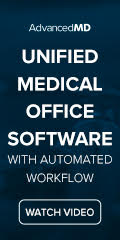The article about Pediatric Associates in CA has a nugget with a potentially outsized impact: the implication that VFC vaccines…
Practice Wise 5/13/12
IT Investment is Necessary
You’ve picked your EHR software. The vendor likely has provided you with a document outlining the hardware and network specifications needed to support your software. That’s just the beginning of what you ultimately need. It’s easy to be overwhelmed by the technical information about expensive hardware and network purchases and the plethora of individual computer choices. Don’t let overwhelm of the moment cause you to make decisions you don’t fully understand.
You are not alone in your inability make these decisions. That’s how many independent medical practices feel when they buy their EHR and then have to buy the hardware to access and optimize their software. They rely on their software and network support vendors to help them make the right choices for them. From an IT standpoint, this is a hard thing to advise people on, there are so many choices and reasons why some choices are better than others.
Starting with the individual computers, the most common question I hear is, “Should we buy tablets or laptops or full workstations? Thin clients for FAT clients?” Each of these has its pros and cons. There are many factors to consider, these are a few that are driven by individuality vs. technical specifications:
Providers and Clinical Staff
How mobile is their position?
- Nurse/MA: highly mobile, rooming patients, charting, ordering tests – they might be better served with a laptop or tablet.
- Provider: will they chart in the exam room, at a central workstation or go back to their office between encounters? Laptop or desktop purchase based on their individual charting preference, sometimes both are in order.
You want portability. You decided to use laptops. Now which ones? Weight is one of the defining factors for this choice. If you care carrying the machine around all day from room to room, you don’t want to be lugging an 8-pound, 15 -17” laptop.
- Consider an ultra-book. There are several good models on the market with solid state drives that are very light and quick to start up.
- Battery used to be the big decision point, but even those with ‘long life’ batteries end up plugging in throughout the day, so this is less of an issue than we once thought.
You need touch screen or full tablet handwriting capabilities.
- Pure tablets are light and portable, but screen real estate is small. Will the amount of charting and the functionality of your EHR bode well in that environment?
- Convertible tablets, heavier than the ultra-books, are an option for greater screen size than some pure tablets.
- Touch screen laptops. Some are lightweight and give you the option to click your screen and type without rotating the monitor position. Look for solid state drive machines for better performance. These are a good happy medium.
- There are straps that you can put on the base of the laptop/tablet that allow you to slide your hand between the strap and machine, providing a little bit of stability when holding the laptop in one hand and typing or writing with the other.
Front Desk, Billing Department, Admin Users
Stationary workstations work best – thin or fat clients.
- If scanning and taking webcam photos, fat clients work best in the long run. I know, I know — great tools such as remote scan exist, but they are not problem free.
- Consider dual monitors for the billers/payment posters.
- USB ports on the front of machines for ease of accessing temp file shares such as thumb drives.
- Do you need CD/DVD drives for providing electronic chart copies to patients to meet Meaningful Use?
Proactive network support is the biggest decision that is most often overlooked and under budgeted. I don’t know how to convey to small and medium practices that they need to bite the bullet and understand that IT is a sunk cost, and plan for it in their monthly budget. When you were running PM software only, although it was not best practice, you could get away with using your IT vendor for break/fix service calls and new hardware purchases. Now that you are running EHR, you can’t afford to not have a managed services contract with your IT vendor.
Short- and long-range plans for software upgrades and license management, hardware replacements, and ongoing patching and monitoring are all essential elements in maintaining your EHR. Items to consider in your managed services contract:
Asset Management (Both Software and Hardware)
- When Microsoft products upgrade, how long will your versions be supported? How quick is your EHR vendor to develop their product(s) to the latest versions available? This was a big issue with operating systems such as Windows XP. When it was no longer available, clinics needed to buy a new hardware and the EHR didn’t support Windows 7 (or the next versions going forward). Proper asset management includes plans to replace the operating system with any other underlying software that your EHR needs to run in conjunction with your EHR upgrade roadmap.
- Hardware that exceeds its warranty period. How easy will it be to obtain replacement parts? Most hardware vendors do not maintain inventory on outdated parts, forcing you to upgrade your hardware, which can be problematic when it is unplanned. Plan on replacing hardware around the time your warranties expire. The good news is that three years used to be the standard warranty period and most vendors are offering 4-5 year warranties on bigger hardware purchases such as servers.
- Patching and updates. Without someone paying close attention to the regular updates pushed by the software and hardware vendors of all your assets, you may miss vital high priority updates that put your organization at risk for down time, security breaches and data loss.
After 12 years doing this work, I continue to be astonished by the number of groups that don’t see the value of IT managed services contracts. Your EHR is the heart of your business, which is often a multi-million dollar business that supports the livelihood of providers, staff, and their families, as well the care of thousands of patients. Yet in order to save money on the front end, they are willing to risk losing their network and/or data. This is shortsighted thinking that I hope will not prove catastrophic to you in the end.
I’m not your IT vendor and have no financial gain in your decision, but I urge you to review your current IT management solution and get on a proactive managed services plan if you are not already on one.
Julie McGovern is CEO of Practice Wise, LLC.







